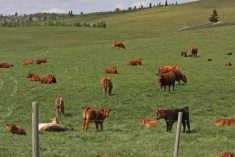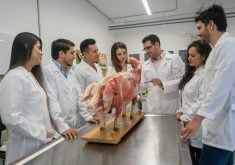Twenty-one Saskatchewan farmers or farm family members will lose their lives this year due to injuries that could have been prevented.
That’s an unacceptable number, says Safe Saskatchewan, an organization of private and public sector companies and agencies working to raise awareness of what they call an epidemic of preventable injuries.
Bruce Fraser, a safety and training manager with Mosaic Potash, said that number of deaths in the mining sector would draw intense scrutiny.
“It’s not a pretty story,” he said. “If we killed 21 people a year in the mining industry, there would be so much outrage.”
Read Also

Fuel rebate rule change will affect taxes and AgriStability
The federal government recently announced updates to the fuel rebates that farmers have been receiving since 2019-20.
Mosaic is one of the founding partners of Safe Saskatchewan along with Saskferco, Ipsco, Prairie Mines and Royalty, Saskatchewan Health, the Saskatchewan Safety Council, SGI, SaskPower and WorkSafe Saskatchewan.
Fraser said farm safety is important to Mosaic because about 25 percent of its workforce also farms. He gave an example of one employee who had to leave his job after his thumb was torn off in a power take-off. Fraser said the employee couldn’t explain why he would practise safety in the mine but didn’t take care on his farm.
“We have to change the culture and raise our safety awareness in all that we do,” Fraser said.
At a safety demonstration held at Regina’s South Country Equipment during agricultural safety week, Merv Copeland said no one should have to go through what he and his family did 30 years ago while living in Alberta.
He tripped and fell when walking around a round baler. One arm got stuck and the other became entangled when he tried to free himself. Both arms were amputated and the family had to learn how to do things differently.
Copeland, who now lives near Sturgis, Sask., said today’s farmers are burnt out from working two jobs and that’s when they don’t pay attention to what they are doing.
“I’ll go anywhere to do a workshop if it will prevent one injury,” he said.
Safe Saskatchewan program co-ordinator Gord Moker said the total cost of all unintentional injuries in the province is about $1 billion a year.
Farm and ranch injuries carry a cost of about $42 million.
And, Moker said, the human cost of pain and suffering is immeasurable.
More than 300 people are hospitalized due to farm and ranch injuries each year; machinery is involved in 44 percent of hospitalizations and 75 percent of fatalities.
Moker doesn’t use the word accident, and he challenged others to call accidents what they really are – predictable and preventable injuries.
He and others noted that the yearly average of 21 farm deaths compares to 30 in all other occupations.
“We have to raise awareness about this epidemic,” he said.















